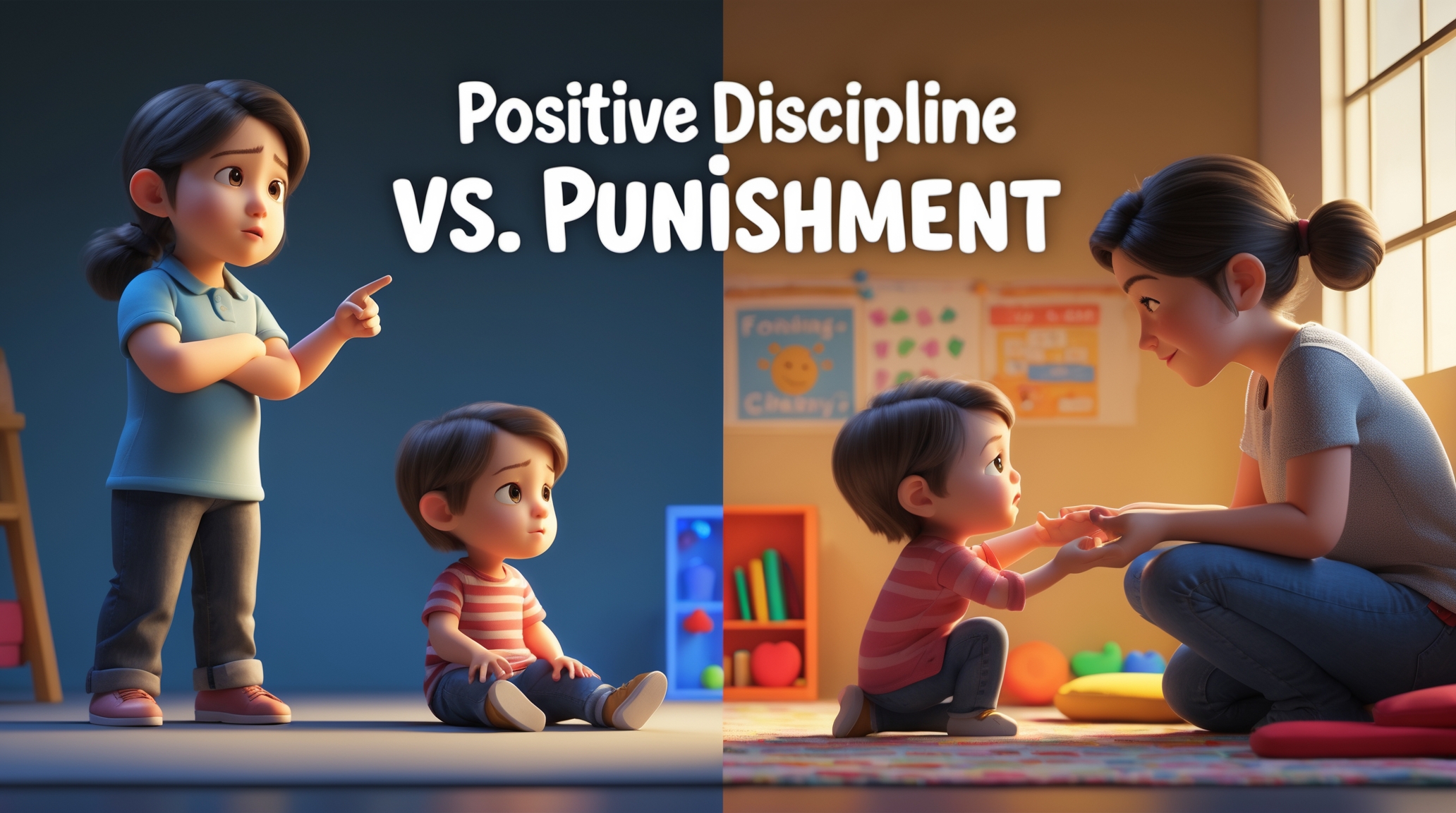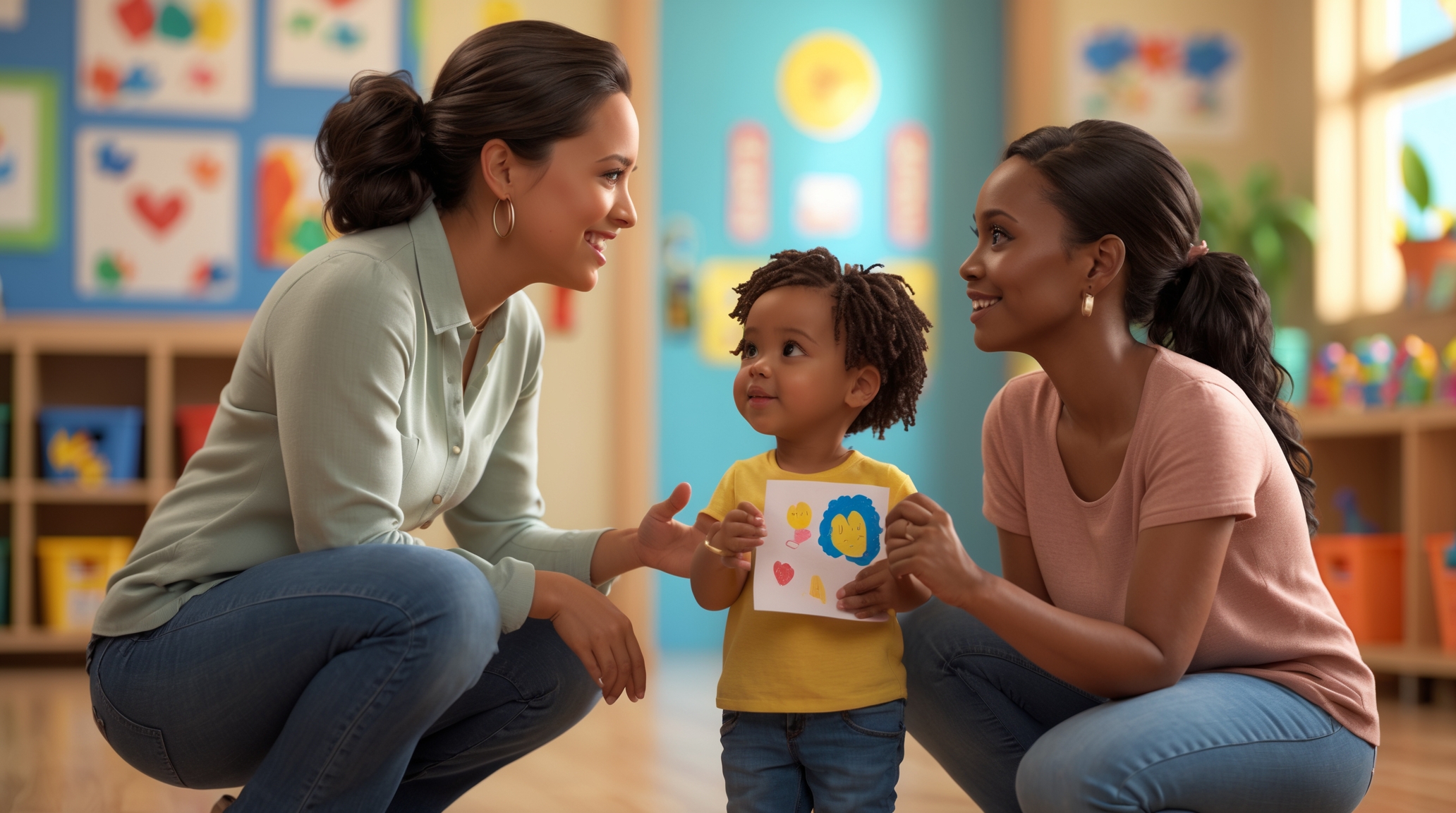
Guiding with Heart: Positive Discipline vs. Punishment at Kidshaven

Guiding with Heart: Positive Discipline vs. Punishment at Kidshaven
A Parent Resource from Kidshaven Learning Center
At Kidshaven Learning Center, we believe that every moment with a child is an opportunity—not just to manage behavior, but to guide and teach. That’s why we emphasize the difference between positive discipline and punishment in everything we do.
Understanding this difference helps create a consistent, supportive environment where children feel safe, respected, and empowered to make better choices—not just now, but for life.
What Is Punishment?
Punishment is a reaction to a child’s behavior with the goal of stopping it—often quickly. It’s based on control, fear, or shame rather than understanding and teaching. While it may result in immediate compliance, it rarely helps a child learn why their behavior was inappropriate or what they could do differently next time.
Common examples of punishment include:
Yelling or harsh tone
Sending a child to a corner or time-out alone
Taking away toys without explanation
Public shaming or embarrassment
These can lead to:
Fear and resentment
Damaged self-esteem
Avoidance instead of learning
Strained relationships between child and adult
What Is Positive Discipline?
At Kidshaven, we practice positive discipline—an approach rooted in empathy, consistency, and connection. Instead of trying to "fix" behavior, we aim to teach skills that help children grow emotionally and socially.
Positive discipline focuses on:
Teaching instead of punishing
Setting clear, consistent boundaries
Encouraging self-regulation and responsibility
Building trust and emotional intelligence
Strengthening the caregiver-child relationship
What Does This Look Like in Action?
Instead of:
“Stop it or you’ll lose your toy.”
We say:
“Toys are for playing gently. If it gets thrown again, we’ll take a break from it.”Instead of:
“Go sit alone until you behave.”
We say:
“I see you’re upset. Let’s take a break together and talk about what happened.”Instead of:
“You’re being bad.”
We say:
“I know it’s hard to wait. Let’s find something to do while we wait our turn.”Why It Matters at Kidshaven
Children at Kidshaven are developing quickly—emotionally, socially, and cognitively. They are constantly learning how to express themselves, solve problems, and relate to others. Our goal is to guide that learning, not control it.
By using positive discipline:
We help children understand their feelings and behaviors
We support long-term development over short-term obedience
We nurture respect, confidence, and resilience
Let’s Work Together
We know children thrive best when caregivers and parents work as a team. At Kidshaven, we’re committed to sharing our positive discipline tools with families so that children experience consistency at home and school.
Here are some tips you can use at home:
Offer limited choices: “Do you want to put on your shoes or your jacket first?”
Stay calm during tough moments: “I see you’re angry. Let’s take a breath together.”
Focus on the teaching moment, not the punishment
Have questions or need support? We’re always here to help you navigate these important moments.

Final Thought
At Kidshaven Learning Center, we don’t just help children behave—we help them grow. By choosing positive discipline over punishment, we create a nurturing space where every child can feel seen, heard, and supported.
Together, we can raise children who not only know the rules—but who understand themselves, respect others, and flourish in a world built on kindness.